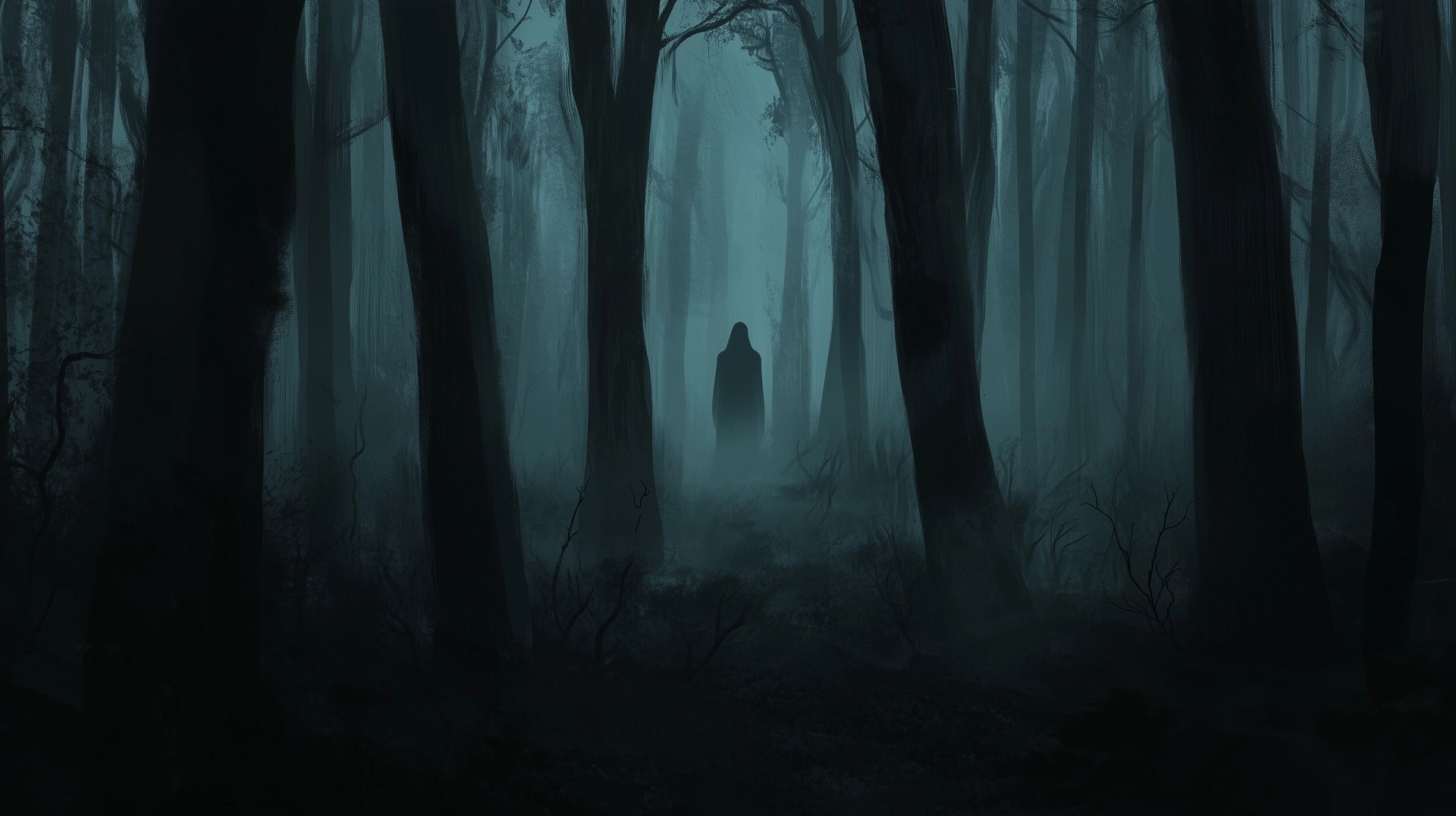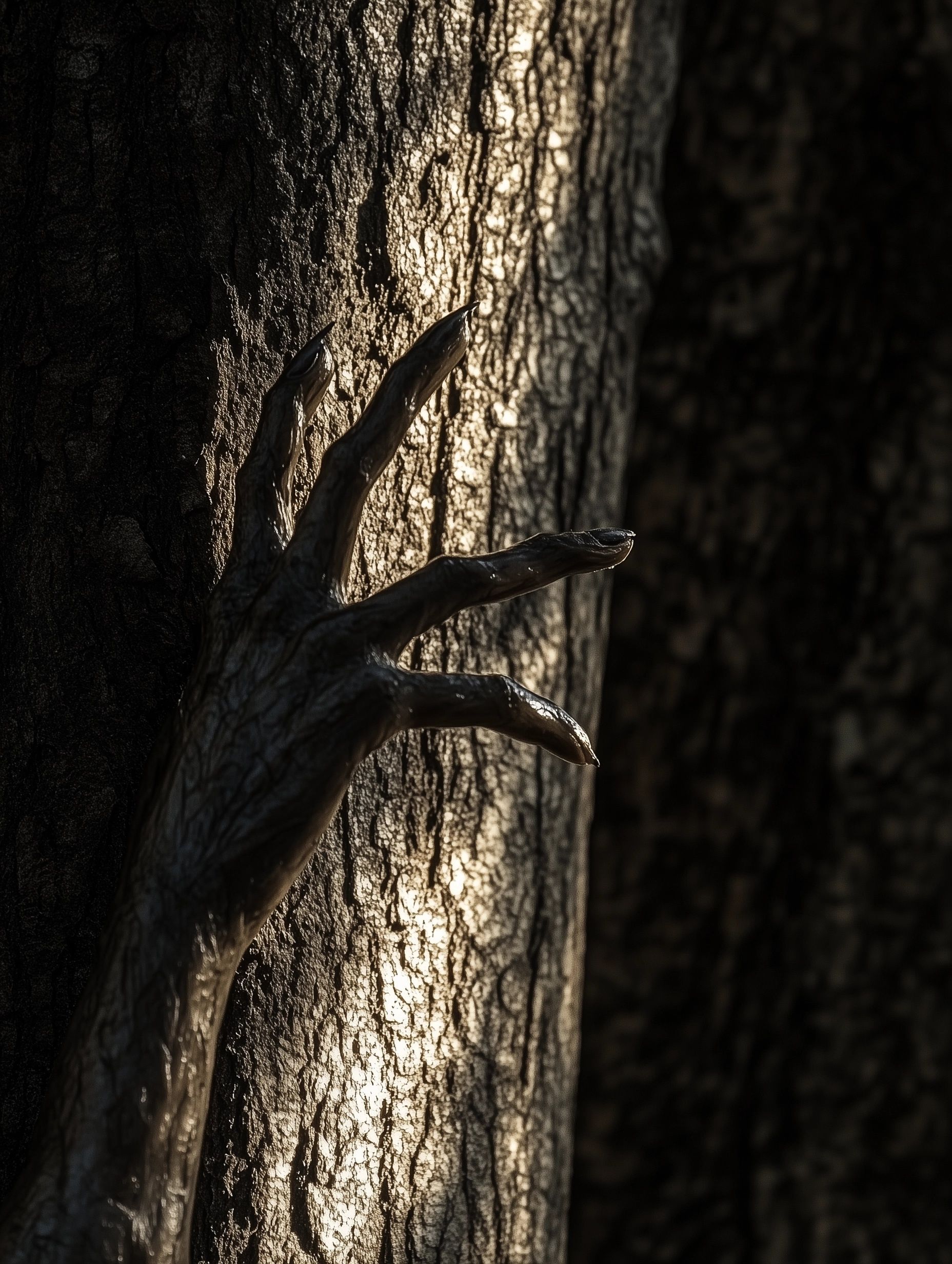Nalusa Falaya: a terrifying tale of fear itself
Published: 23rd Sep 2024
Author: Sean Nixon
Folklore often serves as a reflection of the fears, hopes and moral lessons of the societies that birthed it.
The tale of Nalusa Falaya, a creature from Choctaw folklore, is no exception. Described as a nightmarish, shadowy figure that embodies dread and deception, the legend of Nalusa Falaya has endured through generations of storytelling.
But how does this myth fit into the broader context of folklore and what lessons can we modern readers take from a legend born out of the Choctaw people's historical experiences?
Come with me as I dive into the origins of Nalusa Falaya to examine its place within Choctaw lore and explore the underlying moral lessons that remain relevant today.

Who—or what—is Nalusa Falaya?
In Choctaw folklore, Nalusa Falaya (pronounced “nah-LOO-sah fuh-LIE-yuh”) is often depicted as a grotesque, humanoid figure that moves with eerie, unnatural speed and grace.
Its name translates roughly to "long black being" or "long dark creature," underscoring its dark, shadowy nature. Legends describe the creature as lanky and gaunt, with disproportionately long limbs and an unsettlingly smooth, humanoid face. Its most chilling feature, however, is its ability to manipulate fear, lurking in the shadows and preying on the emotional vulnerabilities of its victims.
Rather than attacking its prey outright, Nalusa Falaya is said to sow seeds of terror through stealth and trickery, causing its victims to panic, flee, or lose their way in the forest. It represents more than just a physical threat - it is an embodiment of psychological fear, the dread of what lurks unseen in the darkness.
This creature is part of a broader pantheon of Choctaw mythological beings that exist in native American folklore, many of whom embody natural forces or serve as moral warnings.
Other Choctaw creatures, like the "Kashehotapalo" or the "Shampe," have specific roles in their cultural storytelling, but Nalusa Falaya stands out for its uniquely psychological terror.
A little historical context of the Choctaw and their folklore
To fully appreciate the Nalusa Falaya myth, it's essential to consider the cultural context in which it developed.

The Choctaw people, originally native to the southeastern United States, have a rich oral tradition that spans centuries. Like many Indigenous cultures, their folklore blends aspects of the natural world with supernatural elements, serving both as entertainment and moral instruction.
The Choctaw’s historical relationship with the land plays a significant role in their mythology. Forests, rivers and swamps are not just geographical features but places charged with spiritual significance.
In this context, Nalusa Falaya may be interpreted as a cautionary figure, reminding people of the dangers that lie in the unknown or misunderstood aspects of their environment. The forest, a place of sustenance, also harbored threats - both real and imagined.
While it is tempting to write off the Nalusa Falaya as just another "boogeyman" figure, its persistence in Choctaw storytelling suggests it resonates on a deeper level.
The legend has endured through the cultural upheavals and forced relocations of the Choctaw people, notably during the Trail of Tears in the 19th century. Such folklore serves as a form of resilience, keeping cultural identity alive in the face of adversity.
Fear as a manipulative force
At its core, Nalusa Falaya symbolizes the power of fear itself - a theme that feels particularly relevant in today’s world, where anxiety and dread often feel omnipresent. The creature doesn’t engage in direct confrontation. Instead, it thrives on psychological manipulation, leading individuals to make poor decisions or react irrationally.

In many ways, this is what makes the legend of Nalusa Falaya so potent: it captures the insidious nature of fear. Just as the creature hides in shadows and preys on the mind, fear often lurks in the corners of our consciousness, undermining rational thought and leading us down dangerous paths.
From a modern psychological perspective, Nalusa Falaya could be seen as a metaphor for anxiety or paranoia, where the actual threat is far less significant than the fear it incites.
Modern life lessons from the tale of Nalusa Falaya
1. The consequences of fear-driven decision making
One of the clearest lessons from the Nalusa Falaya myth is the danger of making decisions based on fear. In the legend, those who encounter Nalusa Falaya often lose their way in the forest or make rash decisions in their panic. This mirrors modern psychological insights into how fear and stress can cloud judgment, leading people to act irrationally.
I have a friend, Sarah*, who faced a tough crossroads in her career. She had been offered a significant promotion - one that could have opened doors for her long-term. But instead of taking time to fully consider it, fear crept in. She became consumed with thoughts of all the ways it could go wrong - the added pressure, the public failures, the fear of being exposed as someone who wasn’t ready (or classic Imposter Syndrome).
Without much thought, she declined the offer. Months later, Sarah admitted to me that she still wondered what might have happened if she had just taken the leap. Watching someone else step into the role and thrive didn’t help. It wasn’t just regret she felt; it was the lingering awareness that the decision had been based on fear, not a clear, rational assessment.

Much like those who encounter Nalusa Falaya and lose their way in the forest, Sarah’s fear had clouded her judgment, leading her away from something she might have grown into.
In today’s fast-paced world, where uncertainty and anxiety are constant companions, it’s easy to fall into the trap of letting fear dictate our choices.
The tale of Nalusa Falaya is a timeless reminder to confront fear directly rather than letting it lead us down a path we never intended to follow. Fear-driven decisions rarely lead to the outcomes we hope for.
2. Avoiding paralysis by fear
In a similar vein, there is also a lesson to be learnt about letting fear lead us to inaction, not just rash decision making.
In the story, victims are not only afraid of the creature but also of making the wrong move, which ultimately leads them astray. This is a warning against letting fear cause indecision or avoidance.
In modern life, this might look like putting off important conversations or avoiding life changes because of the ‘what ifs.’
The myth teaches us that avoidance and inaction can be just as damaging as reckless decisions. When fear makes us freeze, we lose control over our own outcomes. The key - always - is to act thoughtfully, even when the path ahead is uncertain. This is often much easier said than done of course.
3. The danger of isolation
This can be a tough one for the introverts in the room (and I am putting my hand straight up). Nalusa Falaya isolates its victims, creating fear and confusion when they are alone. This speaks to the psychological impact of isolation and how fear can intensify when we don’t have support.

In our modern world, fear often grows when we feel disconnected from others. When we try to face challenges in isolation, fear can distort our perspective, making problems feel insurmountable.
Sometimes the toughest thing is to reach out and ask for help, especially when you’re self sufficient and consider yourself well equipped to handle everything life throws at you (putting my hand up again).
But the myth reminds us of the value of community and facing our fears with the support of others can provide the clarity and courage to make better decisions.
Skepticism in the modern age: how much do we believe?
While the Nalusa Falaya legend holds valuable lessons, it also invites a more skeptical, analytical view of folklore itself. Why do these stories persist? And how much of them should we take at face value?
In modern society, we are quick to dismiss such legends as mere superstition. The idea of a shadowy, manipulative creature lurking in the woods seems far-fetched to our rational, scientific minds.
However, folklore is less about literal truth and more about conveying deeper, symbolic meanings. Stories like Nalusa Falaya endure not because they are factually accurate, but because they speak to fundamental human experiences - fear, the unknown and the battle for control over our minds.
In this sense, folklore like that of Nalusa Falaya occupies an important space in modern discourse, even as we become more secular and rational. These stories remind us of our psychological vulnerabilities, of the way fear can still influence us despite all our advances in technology and knowledge.

The legend of Nalusa Falaya may have originated in the deep woods of Choctaw country, but its lessons are far from archaic. It speaks to the universal, timeless theme of fear - how it manipulates, how it grows in the dark and how it can lead us astray if we let it.
As we navigate a world filled with its own modern uncertainties, from global crises to personal challenges, the cautionary tale of Nalusa Falaya offers a valuable reminder.
Fear, like the creature itself, can be elusive and difficult to confront, but ultimately, it is our reaction to fear that determines whether we are led astray or find our way back home.





